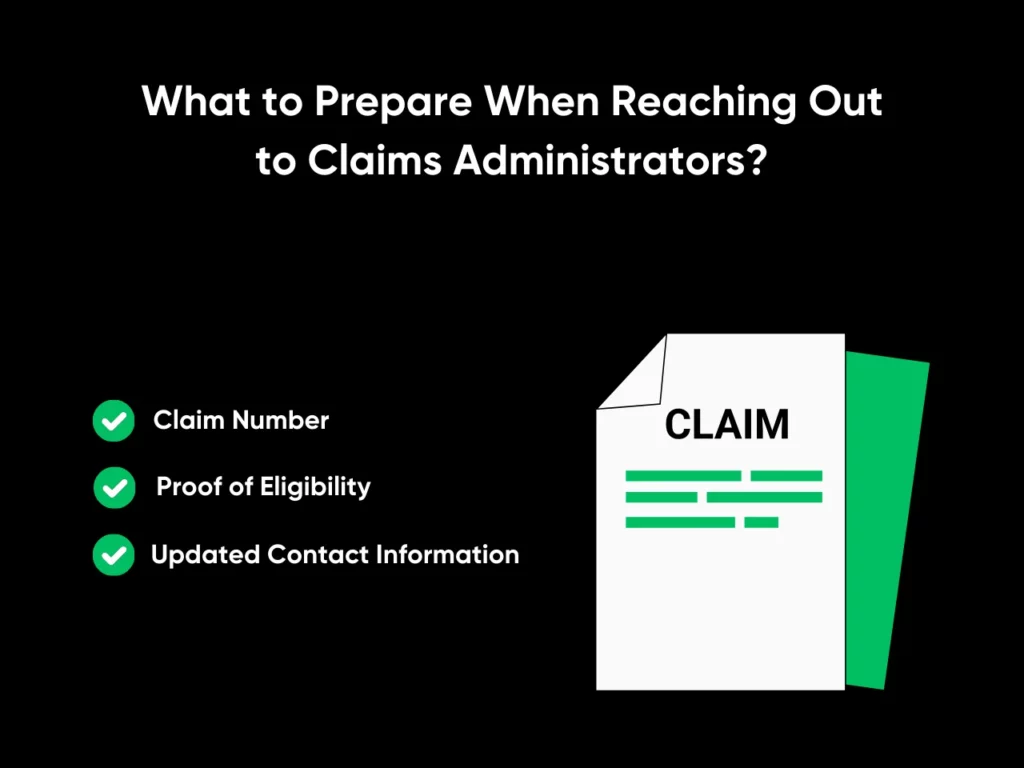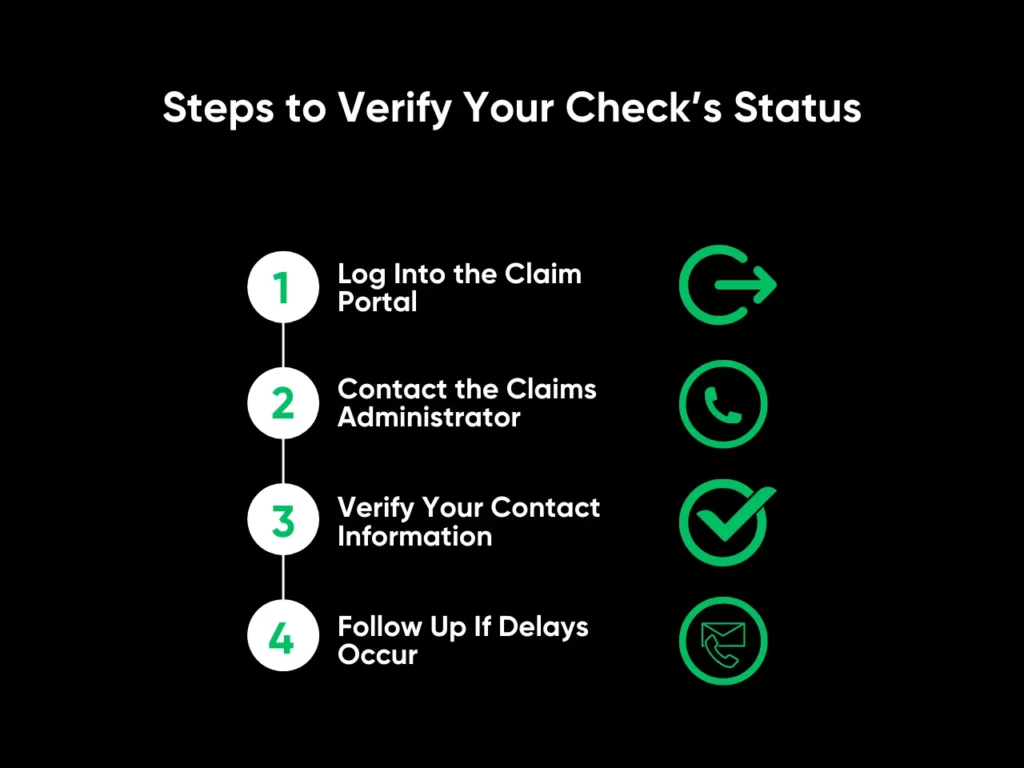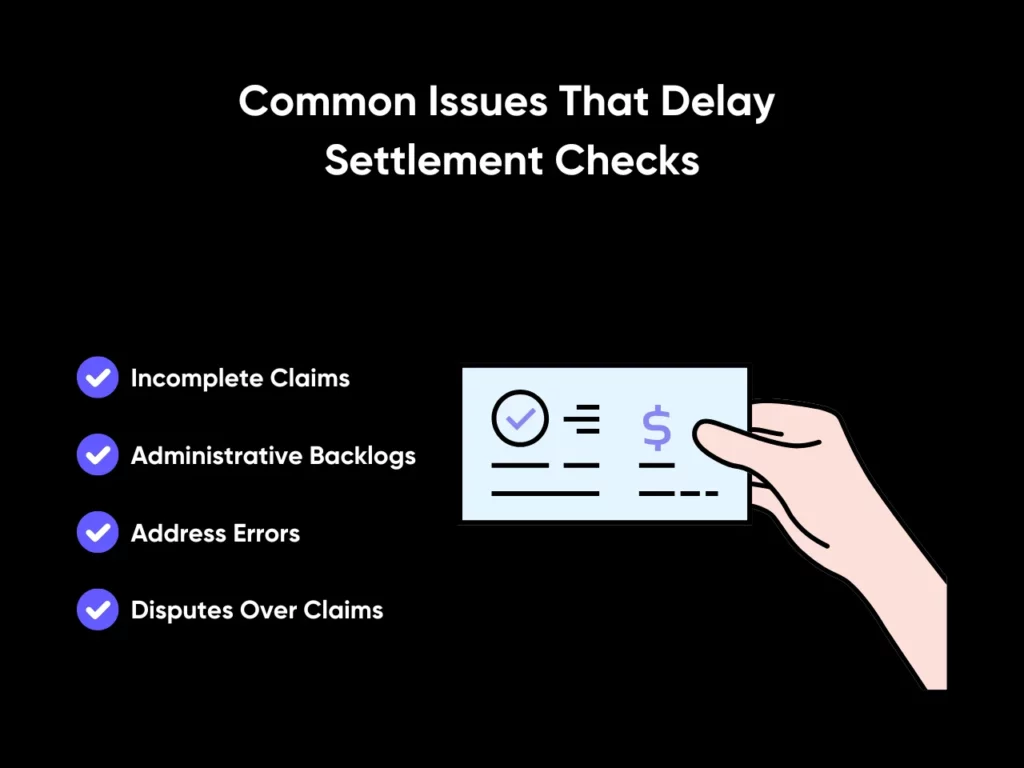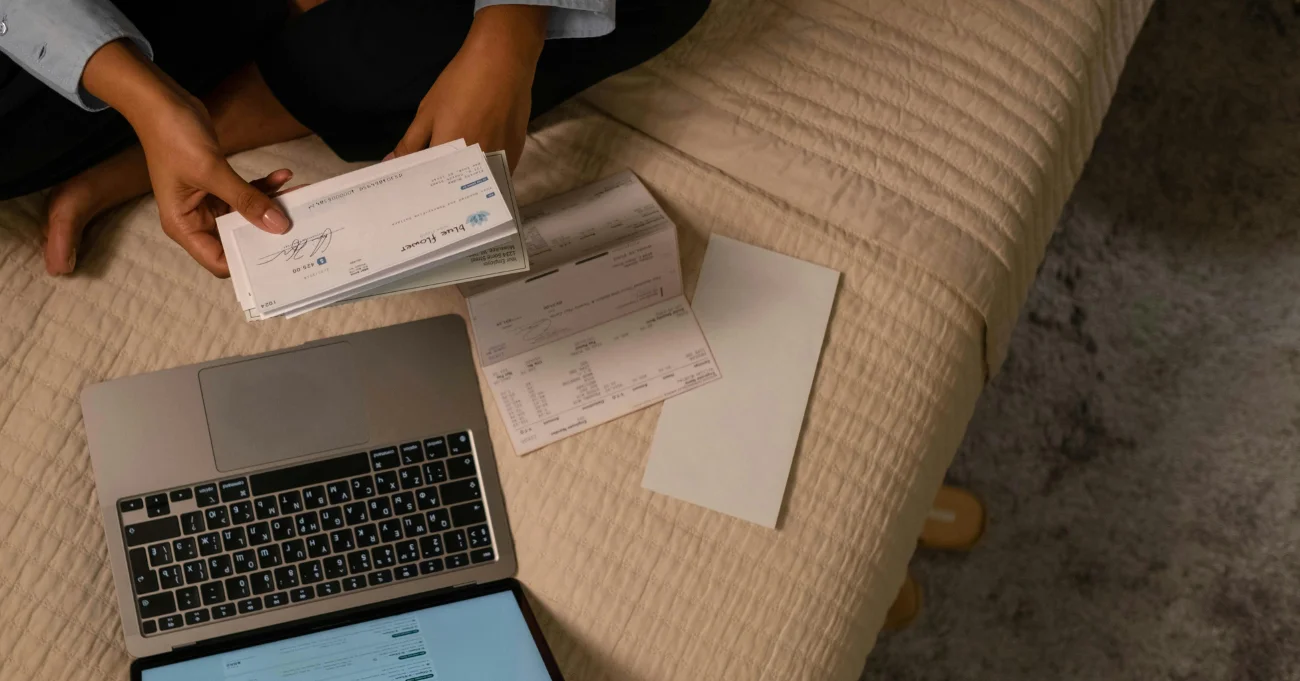Waiting for a settlement check can feel frustrating, especially when the process takes longer than expected. Many people wonder, “How do I track my settlement check?” After a settlement is approved, the money goes through several stages, and each step can cause delays, especially with thousands of claims being processed. That’s why knowing how to track your payment is so important.
At Sparrow, we specialize in empowering claimants with the tools and knowledge to effectively track their settlement checks. Whether you’re navigating delays in class action settlements or wondering what are the steps in filing a class action lawsuit, our expertise ensures that tracking your settlement check becomes a straightforward and stress-free process.
Drawing on our extensive experience in settlement claims management, we’ve crafted this guide to help you answer the question, “How do I track my settlement check?” You’ll learn how to monitor your payment, identify and resolve delays, and leverage key resources like settlement websites, claims administrators, and legal counsel.
Let’s get started!
Understanding the Settlement Process
The settlement process can take time, but knowing the key stages and figuring out the answer to “how to track my settlement check” ensures you stay ahead. From fund allocation to final distribution, understanding these steps minimizes confusion.

After a settlement agreement is reached, the process involves several phases before checks are distributed. Here’s an overview:
- Fund Allocation and Approval: Once a settlement is approved by the courts, funds are allocated for distribution. Claims administrators set up Qualified Settlement Funds (QSFs) to ensure fair and timely payouts.
- Claims Review: Settlement administrators review submitted claims for accuracy and completeness. Delays often occur during this stage if documentation is incomplete or additional verification is required.
- Payment Distribution: The final step is distributing settlement checks. While most claimants receive their checks within 60–90 days of approval, delays can occur due to high claimant volumes or disputes.
Key Resources for Tracking Your Settlement Check

How do I track my settlement check? If you find yourself asking this question, remember to keep an eye on settlement websites, claims administrators, and legal counsels as they are key resources in monitoring your payment so that you can receive it in a timely manner.
Tracking a settlement check involves using the right tools and resources. These are the most effective options for staying informed about your payment:
Settlement Websites
Settlement websites are the first resource claimants should turn to for updates on their settlement checks. These platforms provide claimants with secure tools and information to monitor claims and payments throughout the process.
Many websites include detailed FAQs that address questions about payment timelines, correcting errors in submissions, and uploading additional documents. Notifications and alerts via email or the portal help keep claimants informed about payment progress, incomplete forms, or changes in the distribution timeline.
Some examples include:
- Sparrow Class Action Platform: Sparrow provides resources to help claimants track settlement payouts, resolve delays, and stay informed about upcoming class action lawsuits.
- FTC Refund Programs: The FTC Refunds Website on settlement offers updates on consumer fraud settlements and allows claimants to check the status of their refund payments.
- Chemtool Fire Settlement: ChemtoolClassAction.com provides updates on the Chemtool fire lawsuit settlement’s payment timelines, claim processing, and notices from the claims administrator. Regularly checking the site ensures you stay informed about delays, deadlines, or additional instructions.
Settlement websites are an invaluable resource for anyone asking, “How can I track my settlement check?” These tools are designed to streamline the process and provide quick updates.
Claims Administrators
Claims administrators oversee the entire settlement process, ensuring claims meet eligibility requirements and payments are distributed accurately. If you’re facing delays or need updates, contacting the claims administrator directly is often the fastest way to resolve issues.
When reaching out, be prepared with the following:

- Your claim number, which is essential for accessing your records.
- Proof of eligibility, such as settlement notices or receipts, to verify your claim.
- Updated contact information, including your mailing address, email, and banking details, to avoid delays or returned checks.
Some of the largest claims administrators include:
- Sedgewick Services, which manages settlements arising from legal obligations on medical malpractice, medical records, medical liens, medical expenses, and unpaid medical bills, among others.
- JND Legal Administration, which offers legal services handling settlement terms of personal injury claims and providing direct support to claimants.
- Epiq Systems, a leader in handling the order of settlements for corporate mass tort cases such as those concerning insurance companies, outstanding liens, escrow accounts,
For claimants wondering, “How do I track my settlement check,” reaching out to the claims administrator with all the necessary details ensures faster resolution and accurate updates.
Legal Counsel

If you’ve worked with a defense attorney during the settlement process, you’d know that they are a valuable resource for tracking your personal injury settlement check. Experienced personal injury attorneys have direct access to claims administrators and can help resolve disputes or delays efficiently.
A personal injury lawyer can advocate on your behalf to resolve issues like flagged claims, denials, or payment delays. They can also communicate with administrators directly to:
- Gather updates about the status of your payment.
- Address disputes over eligibility or payment amounts.
- Submit additional evidence to ensure your claim is approved.
Attorneys also provide clear guidance on the next steps, such as appealing denials, resolving submission errors, or escalating issues if necessary. If you’re a claimant experiencing persistent challenges tracking their payments, visiting your attorney’s office might help.
Steps to Verify Your Check’s Status
Knowing how to track your settlement check is crucial once payments begin distribution. Proactively verifying the status of your payment helps avoid delays and ensures that any issues are promptly addressed. Follow these steps to stay informed and resolve potential roadblocks:

Step 1: Log Into the Claim Portal
Most settlement websites offer secure online portals that allow claimants to track the status of their checks. These portals are designed to provide real-time updates, helping you monitor the progress of your submission and payment.
To use these portals effectively, log in with your unique claim number and personal details. Once inside, check for updates about whether your claim has been approved, flagged for additional review, or processed for payment. Many portals also provide a timeline or status bar showing where your claim is in the process. Notifications alert you if documents are missing or corrections are needed, helping you resolve issues quickly.
For a seamless experience, keep your login credentials secure and accessible. Bookmark the portal for quick access, and make a habit of checking it periodically to stay updated on any changes or instructions.
Step 2: Contact the Claims Administrator
If the settlement website doesn’t provide sufficient information or if issues are flagged, contacting the claims administrator is the next step. As the entity responsible for processing claims, administrators can address delays and provide clarity on the status of your settlement check.
Claims administrators can confirm whether your claim has been approved or requires further documentation. They may also provide an estimated timeline for payment or identify specific issues delaying your settlement money, such as incomplete signed release forms or eligibility disputes. To expedite the process, prepare your tracking number and relevant documents before contacting the administrator. Clear and concise communication will help ensure your concerns are resolved efficiently.
Administrators can typically be reached by phone, email, or through a contact form on the settlement website. Some settlements also have dedicated hotlines to assist claimants. If you still find yourself asking, “how do I track my settlement check,” reaching out to the administrator often provides the most accurate updates.
Step 3: Verify Your Contact Information
Incorrect or outdated contact information is one of the most common reasons for settlement check delays. Ensuring your mailing address, email, and banking details are current is crucial to receiving your payment without unnecessary interruptions.
Settlement checks mailed to outdated addresses may be returned to the sender or lost. Similarly, direct deposit payments fail if the banking details provided are inaccurate. Before submitting or updating your information, double-check for errors and inconsistencies. Notify the claims administrator immediately if you have moved, changed your email, or switched bank accounts.
To ensure your updates are received and processed, consider using certified mail or online confirmation tools when submitting corrections. Verifying your contact information proactively reduces the likelihood of delays caused by outdated or incorrect details.
Step 4: Follow Up If Delays Occur
Even after completing the above steps, delays can still happen. If your payment hasn’t arrived within the expected timeframe, following up promptly is essential to identify and resolve the issue.
Start by contacting the claims administrator to confirm your claim’s current status and inquire about the cause of the delay. If the administrator cannot resolve the issue, escalate the matter to your attorney or legal representative. They can communicate directly with the administrator or other involved parties to expedite the process.
When following up, document all correspondence, including emails and call logs, for reference. Request specific details about the delay and any additional steps you need to take to resolve it. If delays persist, your attorney can advocate on your behalf and ensure your payment is processed without further setbacks.
Common Issues That Delay Settlement Checks
Even with proper tracking, some settlement checks may be delayed due to a variety of issues. Understanding these common challenges and addressing them proactively can significantly reduce delays and ensure a smoother claims experience.

Incomplete Claims
One of the most frequent causes of delays is incomplete claim submissions. Missing documents, such as proof of eligibility or required forms, can halt the approval process. Submission errors, including incorrect claim numbers, mismatched personal information, or illegible documentation, may lead to rejections or requests for corrections.
Administrative Backlogs
Large legal settlements often involve thousands, if not millions, of claimants. Claims administrators tasked with processing these cases can face significant backlogs, particularly in high-profile settlements involving personal injury lawsuits against insurance companies insurance claim cases. These internal issues can lead to delays in both the review and payment stages.
Address Errors
Settlement checks are often delayed due to incorrect or outdated mailing and banking information. A change of address or errors in provided details can result in checks being returned to the administrator or lost in transit. In personal injury cases where direct deposit is used, inaccurate banking details can lead to failed transactions and further delays.
Disputes Over Claims
Disagreements regarding eligibility, payment amounts, or the validity of a claim can significantly delay the settlement check process. These disputes often require additional review, legal intervention, or further documentation to resolve, extending the time it takes for payment to be issued.
If you are an injured party asking, “how do I track my settlement check,” understanding and addressing these potential issues in advance ensures a smoother experience. By submitting complete claims, verifying personal information, and staying proactive, you can avoid many of the common pitfalls that cause settlement payment delays.
Key Takeaway
Waiting for a settlement check can feel like watching paint dry—slow, uncertain, and frustrating. The journey from court approval to payment distribution involves multiple stages, often leaving claimants wondering, “How do I track my settlement check?”
Sparrow is here to guide you with ease. From addressing legal fees to understanding how to find out settlement amounts, we ensure you’re equipped to monitor your settlement effectively. Visit Sparrow’s blog for expert insights and tools to help you secure your financial compensation without unnecessary setbacks.

